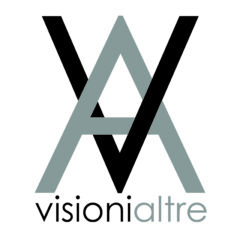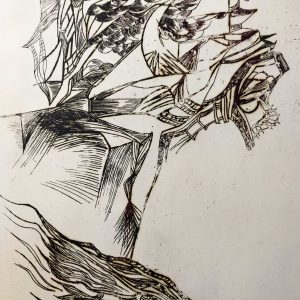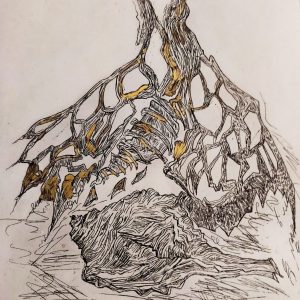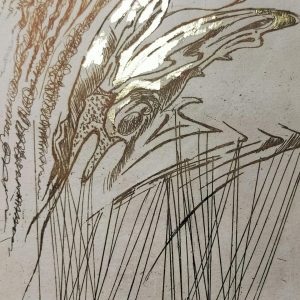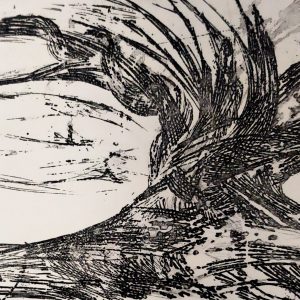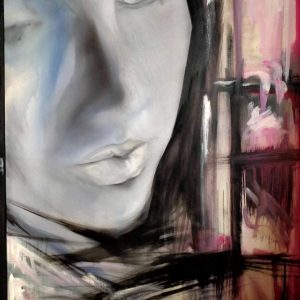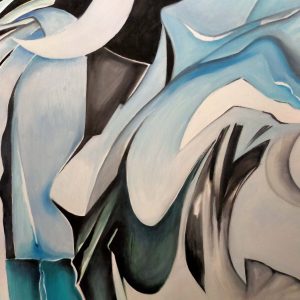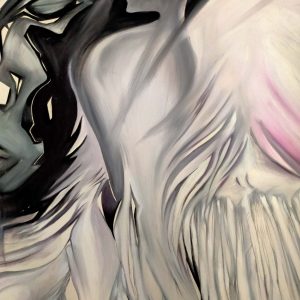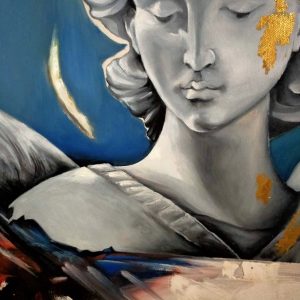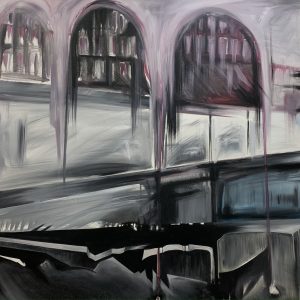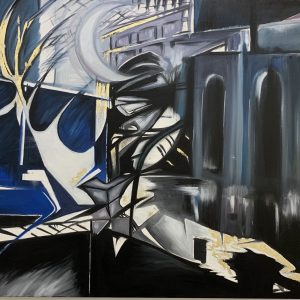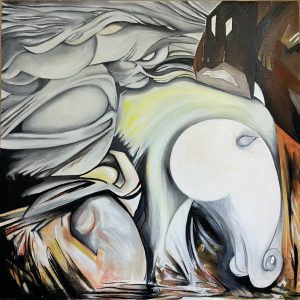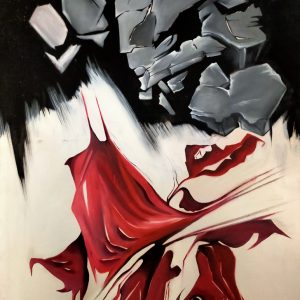Le arti sono le foreste pluviali della società.
Producono l’ossigeno della libertà,
e sono il primo sistema d’allarme a scattare quando la libertà è in pericolo.
(June Wayne)
Viaggio nell’immagine
Per una porta chiusa serve una chiave, che consenta il passaggio attraverso la soglia, che consenta il movimento da un luogo ad un altro luogo anche se poi, ci si accorge presto, i luoghi sono molti e non sono mai così tanto lontani quanto pensavamo, ma profondi, dentro noi stessi.
Dunque, nel passaggio da un luogo verso un altro servono principalmente tre cose: la chiave, la porta e noi che quella soglia vogliamo attraversare praticando il gesto dell’apertura. Dal momento in cui diventiamo consapevoli di questo siamo consapevoli di ciò che significa viaggiare. E’ con lo spirito del viaggio che si è cercato di avvicinare le opere di Mirella Boso, ciascuna una soglia non così comoda e immediatamente praticabile.
Nell’arte ogni immagine è corpo, non solo il corpo fisico di un uomo o di una donna, di un paesaggio, di un oggetto; anche un pensiero, un’emozione, un minimo tracciato dei sensi si materializza in forme o geometrie o colore, struttura. Tutto è ed ha un corpo fisico, materico, anche quando si tratta di immagini che definiamo ‘virtualità’. Tutto, a ben guardare è virtuale, non fosse che per il fatto che ogni percezione è visione della realtà, non oggettivazione di una realtà. Tra l’altro, una non significa unica, ma una tra le tante, le molteplici altre che ciascuno di noi ha, persino di una medesima cosa.
In queste opere è come trovarsi di fronte ad una stanza, accorgersi, come guardando dal vetro di una finestra, che dobbiamo entrare, farci più vicini e al tempo stesso comprendere che la stanza è chiusa e, dentro quelle tele, a loro volta finestre, si aprono corpi che sono forme mai percepite compiutamente e s’innestano tutte in una superficie che è corpo anch’essa, e, pur se reale, corpo familiare ed estraneo, non subito nostro. Gli oggetti del mondo dell’immagine non perdurano nel tempo reale, esistono solo nello spazio e nel tempo del mondo dell’immagine, eppure sono, loro sono la realtà.
La percezione dell’immagine è un tipo di percezione particolare che ha una sua peculiare capacità di riempimento e verifica, di significato e senso. In questo inventare sogni e stabilire teorie su di essi, teorie fatte dal pennello, dal gesto, dalla stesura del colore dando materia e corpo al sogno, il testo pittorico diventa materia di ascolto: è anch’esso lingua, ed è realtà, presenza, tempo irrinunciabile di un continuo presente. Questa parola ascoltata dagli occhi, sentita dal cervello, ripetuta dal cuore si espande per le innumerevoli strade; inquieto, l’occhio della tela si fa occhio di chi la guarda e il testo sembra aperto, poi si piega, si ripiega, infittisce di segni, una chiarezza che tale non era perché tutto si moltiplica in luci e ombre, curve, assetti e nulla sembra più materico di quello striscio di pennello che vorrebbe raggiungere la forma di un volto e lungo il cammino si flette in un suo doppio, una inquietudine che non si cela e mostra il suo lato fantastico.
L’intera immagine si forma tra chi guarda (la stanza in cui il suo sguardo spazia) e quella piccola ‘finestra’ che si apre nel mondo dell’immagine. L’immagine come porta comunicante attraverso la quale possiamo incontrare noi stessi.
Fernanda Ferraresso
Journey in the image
For a closed door, you need a key, that allows the passage through the threshold and the movement from one place to another place even if, then, you soon notice that the places are many and they are never so far away as we thought, but deep, within ourselves.
Therefore, in the passage from one place to another, three things are mainly needed: the key, the door and ourselves, who want to cross that threshold by practicing the gesture of openness. From the moment we become aware of this, we are aware of what it means to travel. With the spirit of the journey, we tried to approach the works of Mirella Boso, each a threshold not so comfortable and immediately practicable.
In the field of art, every image is body, not only the physical body of a man or a woman, of a landscape, of an object; contrary, even a thought, an emotion, a minimum trace of the senses, materializes in shapes or geometries or colour, structure. Everything is and has a physical and material body, even when it comes to images that we define as ‘virtuality’. Everything, after all, is virtual, if only for the fact that every perception is a vision of reality, not an objectification of a reality. Among other things, one does not mean unique, but one among many, the many others that each of us has, even of the same thing.
In these works, it is like being in front of a room, realizing, as if looking through the glass of a window, that we must enter, make ourselves closer and, at the same time, understand that the room is closed and inside those canvases, in turn windows, open bodies that are forms never fully perceived and are all grafted into a surface that is also body, and, although real, familiar and foreign body, not immediately ours. The objects of the world of the image do not last in real time, they exist only in the space and time of the world of the image, and yet they are, they are reality.
The perception of the image is a particular type of perception that has its own peculiar capacity for filling and verifying, meaning and sense. In this inventing dreams and establishing theories on them, theories made by the brush, by the gesture, by the drafting of the colour giving matter and body to the dream, the pictorial text becomes a matter of listening: it is also language, and it is reality, presence, the indispensable time of a continuous present. This word, heard by the eyes, heard by the brain, repeated by the heart expands through the countless streets; restless, the eye of the canvas, becomes the eye of the one who looks at it and the text seems open, then bends, folds, a clarity that it was not because everything multiplies in lights and shadows, curves, arrangements and nothing seems more material than that strip of brush that would reach the shape of a face and along the way flexes into a double, a restlessness that does not hide and shows its fantastic side. The whole image is formed between the viewer (the room in which his gaze sweeps) and the small window that opens into the world of the image. The image as a communicating door through which we can meet ourselves.
Fernamda Ferraresso
